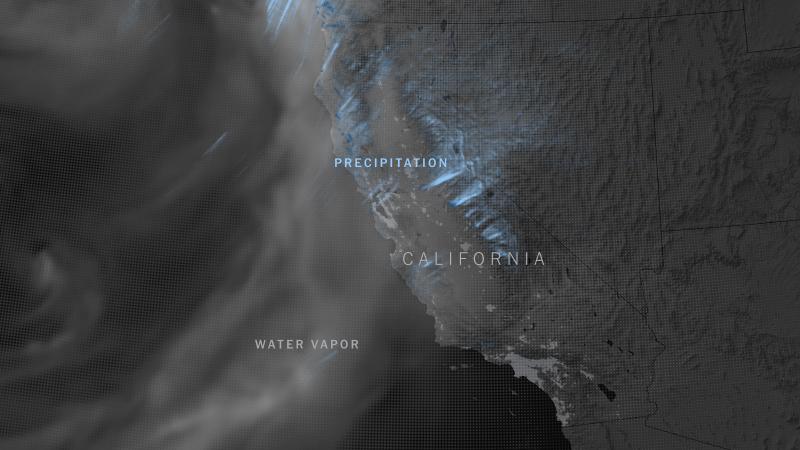California Prepares for Superstorm That Could Lead to Major Flooding - The New York Times



A new report finds that climate change has increased the risk of a monthlong superstorm.
By Raymond Zhong
Aug. 15, 2022, 8:26 a.m. ETImageCredit...The New York Times
Drought and wildfire are the horrors dominating headlines this time of year. But California also faces the threat of another kind of calamity, one that could affect the whole state and cause more economic damage than a big San Andreas Fault earthquake.
New research by climate scientists has found that the risk of a monthlong superstorm, one that would pummel both Northern and Southern California with rain and snow in astounding quantities, is rising rapidly because of human-caused global warming. The chances each year of one occurring are already around one in 50, the study estimates. And the likelihood keeps growing the more we pump greenhouse gases into the atmosphere.
Warmer air holds more moisture, which means atmospheric rivers — the storms that sweep in from the Pacific and are sometimes called "Pineapple Express" events — can carry bigger payloads of precipitation.
California has been struck by giant atmospheric-river-fueled storms before. A particularly devastating one in 1861-62 transformed the Central Valley into an inland sea, and Sacramento was flooded so severely that Gov. Leland Stanford had to take a rowboat to his inaugural events in January 1862, according to the Sacramento History Museum. The State Legislature also temporarily moved to San Francisco.
The state has since dammed up its rivers and built bypasses to whisk floodwaters away from population centers. If that 19th-century storm hit today, all of this infrastructure would make it less likely to cause destruction. Still, the state is also far more developed — with bigger cities, more valuable farms and businesses, and many more people — which means the consequences could still be great.
If there's good news to report in any of this, it's that plenty of planners and policymakers are aware of the risks. As I wrote in The New York Times on Friday, the Department of Water Resources is planning to use the new scientific findings to update the state's flood plans. With the help of supercomputers, they will map out in detail how all of that precipitation will flow through waterways and over land.
California is also working to strengthen levees in urban areas of the Sacramento and San Joaquin Valleys to provide protection against 200-year storms, or those with a 0.5 percent chance of occurring in any year.
As I found while reporting this interactive story, however, there's another side to all of these preparations, which is that they've turned flood risk into something many Californians never think about.
On one level, that's progress: Most of us have better things to do each day than worry about nature's wrath. But there are also perils to not thinking you live in a danger zone. You might ignore evacuation orders, downplay storm forecasts, decline flood insurance.
"When the government is involved with these levees, most homeowners trust that we're doing the right thing, and that it's safe for them to put their life savings in a home," Ricardo Pineda, a retired engineer for the state, told me as we toured Sacramento's flood-management works recently.
"They love to walk their dogs on the levee," Pineda said. But "are they prepared for the economic consequences of New Orleans-type flooding?"
In Lathrop, near Stockton, the River Islands planned community sits in an area on the San Joaquin River that flooded terribly during a 1997 storm. The developer built extra-wide levees, without using government funds, to protect the charming homes and tidy streets.
Susan Dell'Osso, president of River Islands Development, told me that many of her buyers were from the Bay Area and asked tough questions about schools and life in the Central Valley.
"They never ask questions about flooding," Dell'Osso said. She tries to educate them about it, she said. But "they don't even realize, I think, that there's a risk."







This is basically the plot of the doomsday movie The Day After Tomorrow from a couple decades ago.
The plot of that movie was built on an assumption that a mammoth, found in the permafrost, instantly froze to death, which is false.
There's been a lot of assumptions being made and policies acted upon using those assumptions.
I dont think we rely on Hollywood movies for scientific information.
I believe that is, unfortunately, not true.
The movie relied on the scientists that made the assumption that the mammoth instantly froze to death. There was another assumption about the north Atlantic current made in the movie that no scientist refuted because they take it as fact, yet they have yet to prove that is what would happen.
The movie relied on the scientific research to build the plot upon, not the other way around.
We could use a few pineapple expresses (sounds like a cocktail). Unfortunately, they’re predicting La Niña for this winter, which usually means more dry weather.
It’s kind of funny to me how much attention this report has received. Towns in the eastern half of the country flood all the time, and while it is news, it’s not this end-of-the-world vibe.
All the hysteria and fear mongering about climate change over the years has caused the public to pretty much tune the climate cult out. Sad to see more billions are going to be wasted on this non problem.
Not to mention fear mongering over simple weather. How many years now have we been warned in some part of the country about "Snowmageddon" Fear and hysteria seems to be the only way they know how to communicate anymore.